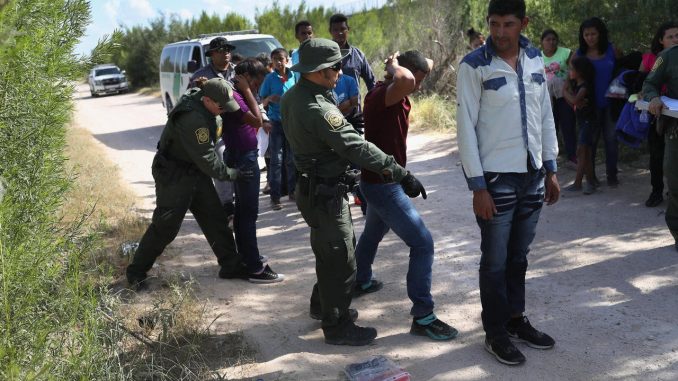
-
Hundreds of Central American migrants walk together on the highway, after crossing the Guatemala – Mexico border, near Ciudad Hidalgo, Mexico, Wednesday, June 5, 2019. State and local police provided a security escort to the migrants as they walked along a highway leading from the border to the first major city in Mexico, Tapachula. (AP Photo/Marco Ugarte)
METAPA, Mexico – Some 200 military police, immigration agents and federal police blocked the advance of about 1,000 Central American migrants who were walking north along a southern Mexico highway on Wednesday.
The group of migrants, including many women and children, set out early from Ciudad Hidalgo at the Mexico-Guatemala border and was headed for Tapachula, the principle city in the region. State and local police accompanied the caravan.
The officials blocked the highway near the community of Metapa, about 11 miles (18 kilometers) from Tapachula. They were unarmed and said their orders were to urge the migrants to board buses there that would carry them to a fairgrounds outside Tapachula that has been used to register and house migrants.
In recent months Mexico has used raids and roadside checkpoints to discourage highway marches such as the massive migrant caravans that occurred in 2018 and early 2019.
The migrants say they aim to reach the U.S. border, where many plan to request asylum.
The action came as Mexico’s Foreign Secretary Marcelo Ebrard was in Washington to try to head off tariffs on Mexican imports threatened by U.S. President Donald Trump, who is demanding that Mexico do more to stop the passage of migrants through its territory.
Last year, migrants began travelling from Central America in large caravans that grew as they advanced through southern Mexico, drawing Trump’s ire. The caravans offer migrants a relatively safe way to travel and are far less expensive than hiring smugglers.
They account for only a fraction of the normal migratory flow, but their visibility has given them an almost symbolic status in what Trump calls a migratory crisis at the U.S. border.
The first caravans were warmly received in southern Mexico towns, but as they continued, towns complained they did not have the resources to continue feeding and caring for them.
Many of the migrants say they’re fleeing gang violence, oppressive extortion and corruption in Guatemala, Honduras and El Salvador. But a devastating drought is also gripping parts of the region and devastating farm families.
Mexico has responded by offering more options to stay legally on its territory, but most still have the ultimate goal of arriving in the U.S., where they can earn better pay and in many cases reunite with relatives.
*story by Fox News